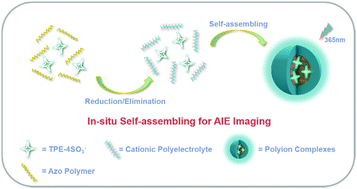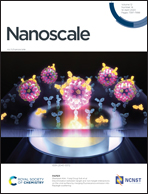In situ construction of a self-assembled AIE probe for tumor hypoxia imaging†
Abstract
This communication reported a hypoxia-responsive fluorescent probe based on the in situ concept, which combines a water-soluble azobenzene containing copolymer with a carbamate linkage and an anionic water-soluble aggregation-induced emission fluorogen (AIEgen) tetraphenylethene (TPE). The water-soluble copolymer can be transformed into a protonated primary amine containing polymer by the reduction of the azo bond and through a 1,6-self elimination cascade reaction under hypoxic conditions. The transition of anionic TPE from the molecular dispersed state to the aggregation state induced by self-assembly with the cationic polymer would lead to an obvious increase in fluorescence according to the AIE characteristics.

- This article is part of the themed collection: 2020 Nanoscale HOT Article Collection


 Please wait while we load your content...
Please wait while we load your content...